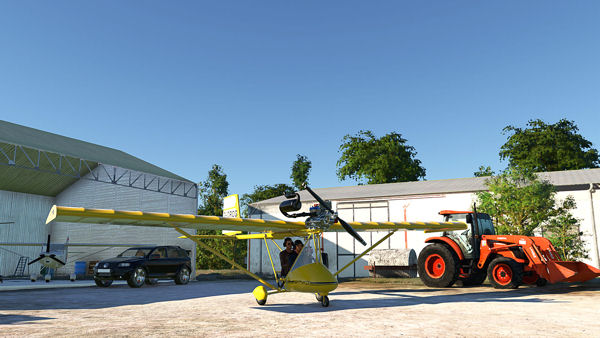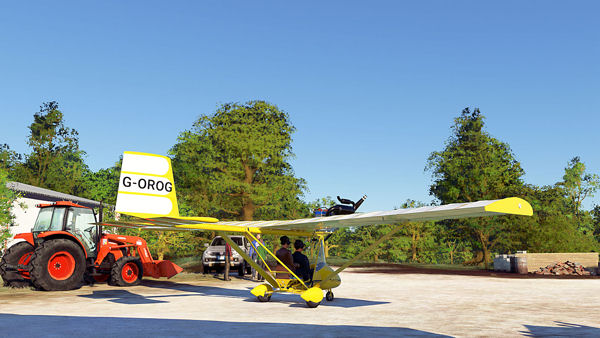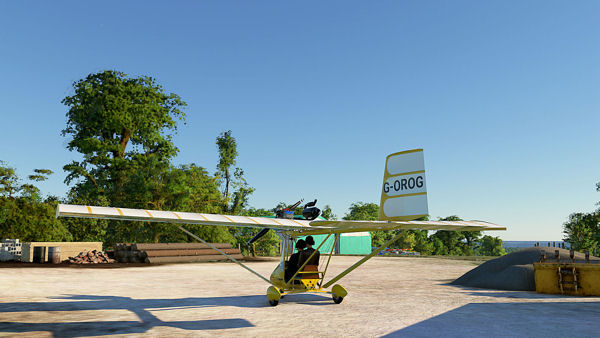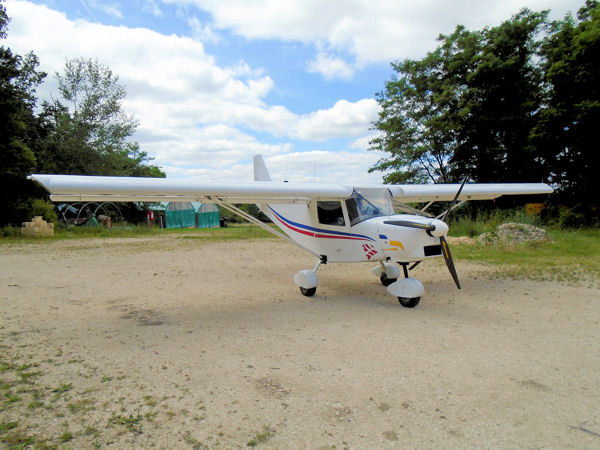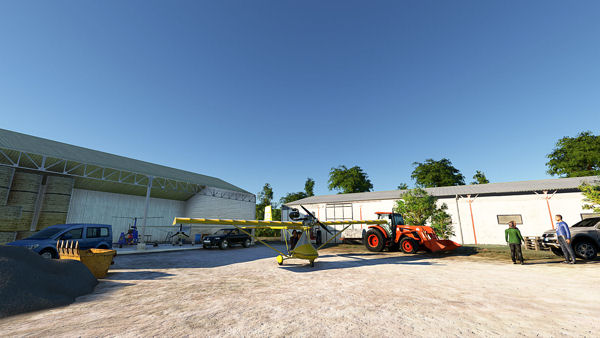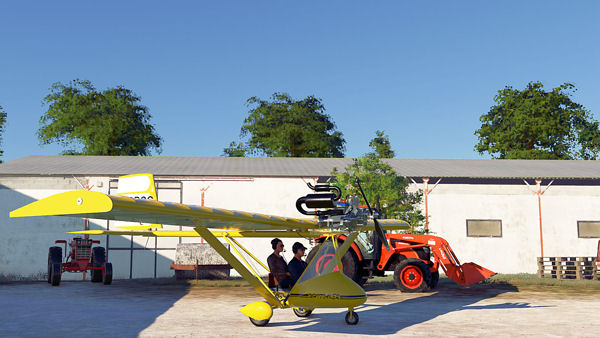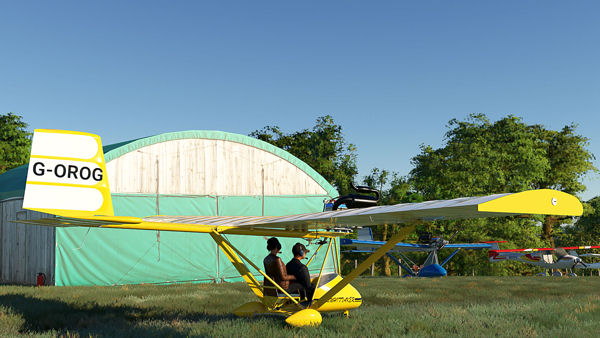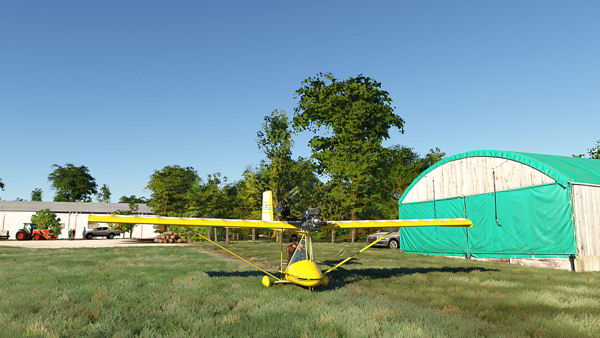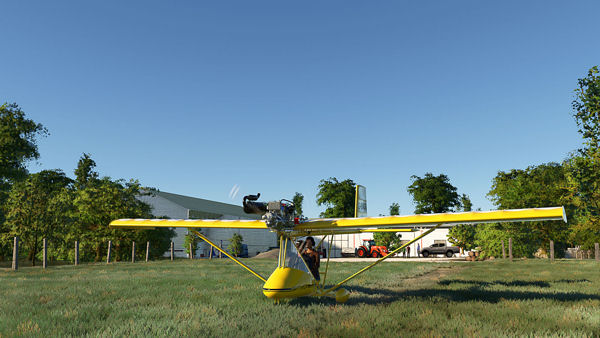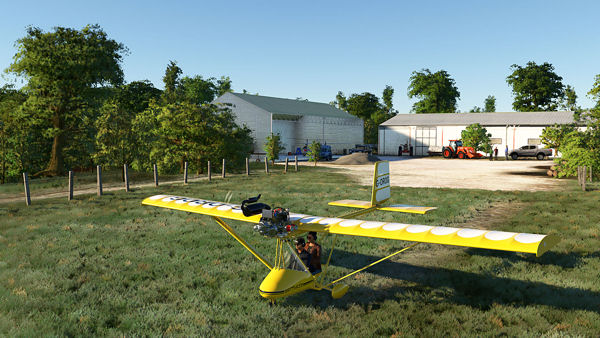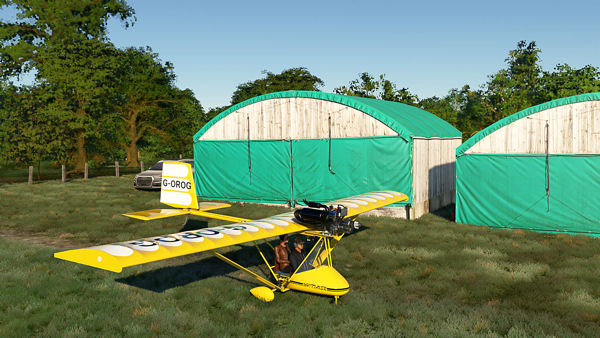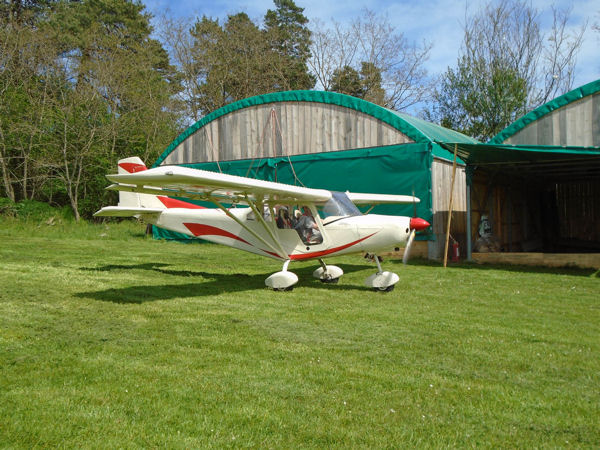I’ve been flying for over 50 years and as a natural extension of that I’ve been involved with flight simulators for many years. These have been PC based, of course, although many years ago (late 80s or possibly early 90s, I can’t remember) I was let loose on a full motion simulator used by airline pilots at British Caledonian (remember them?) and successfully shot the Checkerboard approach at Hong Kong and landed a McDonnell Douglas DC10 at the old Kai Tak airport. This really was one of the highlights of my flying career.
The first PC flight sim that I got hold of was Microsoft Flight Simulator 2002 (MSFS 2002) and I had a lot of fun with that even though the ‘flying’ experience left much to be desired compared to the real thing. As I was doing quite a bit of graphics work and web design for my business at that time it was pretty natural that I eventually got into creating and designing flight simulator stuff.
I didn’t get into creating aircraft models although I did quite a few livery ‘repaints’ and aerodynamic tweeking that I uploaded for others to download from the internet and my most successful project was a Kai Tak airport scenery package that enabled sim pilots to land there long after it had been closed and demolished for which there were many thousands of downloads from all over the world. I then went onto MSFS2004 and eventually MSFSX before losing interest.
My interest was rekindled with a non-Microsoft flight simulator, X-Plane 11. This was haled by many, although not by me, as being a flying experience that was much closer to real life. I regarded that then, as now, as just hype as all of the ‘cockpit interiors’ of the type of aircraft that I wanted to fly looked crude compared to the real things and to make it worse, the outside views were as far from realistic as you could imagine.
Nevertheless I decided to use the time when I was sick and receiving chemo in 2017/2018 and couldn’t fly for real to get back into scenery design again and at that time created two highly realistic X-Plane 11 sceneries for two local airfields. These were Figeac-Livernon, which I uploaded, and Ste-Foy-la-Grande, which I didn’t bother to, although it too was highly detailed and realistic. The reason for the latter was that the X-Plane ‘terrain mesh’ close to the airfield had a huge bump in it that isn’t there in real life and couldn’t be corrected, so although I also made a scenery for Castillonnes, where I gained my French ULM licence at, I lost interest once again in flight simulators.
That was until the end of last year. Microsoft got out of PC flight simulators after a couple of abortive replacements for MSFSX and the word was that they would have no further interest in them. However, rumours began to circulate and there were leaks that another new simulator was being developed in conjunction with a partner, Asobo Studios in France, and this was eventually launched as MSFS2020 in 2020 to commemorate 40 years since Microsoft launched their first flight sim. I acquired a copy last October/November after yet another upgrade, MSFS2024, had hit the market and it was thought interest would wane in its predecessor.
This hasn’t happened, mainly because teething troubles are still being experienced with MSFS2024, but for now I’m happy with the older version. The reason is that it is now incredibly close to real life in almost all aspects of the flying experience, the more so because the sim can be enjoyed in Virtual Reality (VR). This means that the pilot can be placed inside a VR world and be ‘inside’ looking out of the aircraft they are ‘flying’. The outside view is staggering and close to real life (and is even closer to real life, I’m told, in MSFS2024, although I haven’t as yet tried it) because what they have done is scan the whole Google Earth/Bing Maps world with artificial intelligence (AI) and then recreated it in the flight sim.
Trees and vegetation (of the correct biomes) have been placed exactly where they are in real life, and although AI can’t tell exactly what a building looks like at ground level from looking down from above, it takes a pretty good guess. And for particular points of interest and major towns and cities, buildings etc have been modelled accurately in 3D so flying over them is just like the real thing. So you can fly over the Sydney Harbour Bridge and Opera House from your chair at home, fly through the buildings and skyscrapers of London and Manhatten, land and take off at all the major airports of the world and much, much more depending where your imagination takes you to. You can even find your own house and those of your neighbours.
All this perked up my attention and pretty soon I started thinking about scenery design again. Much has now changed, of course, because technology has moved on, but I was intrigued to see if the computer models that I’d created for my X-Plane 11 Figeac-Livernon scenery could be ‘ported over’ into MSFS2020. Many wise heads on the internet said they couldn’t, the main reason being that the computer modelling software I’d used (Sketchup) was not compatible with MSFS2020, which requires designers to use a system called Blender.
I and many others have found Blender to be an incredibly capable app but very difficult and time-consuming to get into and learn and complete over-kill for the sort of modelling we wanted to do. Many also said that it just wasn’t possible. But they’re wrong and it is. After many hours of work I’ve found a way to do it and the first major project that I did was recreate the Figeac-Livernon scenery I’d made for X-Plane 11 in MSFS2020. It’s great and actually looks a whole level better in the newer sim.
I’ve also gone on to make more MSFS2020 sceneries concentrating on the airfields that I fly into and out of in real life. French designers have already created excellent sceneries for several that I’m interested in (including Ste-Foy-la-Grande and Castillonnes for example) so I’ve turned my attention closer to home and have been working on Malbec, my home airfield, Galinat (wrongly named in the sim), Condat (also wrongly named) and Mauzens, a new field opened by Phillipe who used to be based at Malbec.
After many hours of work, which involved a steep climb up the learning curve, I’ve just finished the scenery for Malbec and taken a series of shots with a British microlight/ULM call a MW6. This was a basic second generation ‘tube and fabric’ model designed by Mike Whittaker with characteristics much like those of my old X-Air and AX3 Weedhoppers and I’ve tweeked its aerodynamics so it performs very closely to those aircraft. Below are the shots in question and I’ve thrown in a few real life shots for comparison purposes so you can see how close the scenery is to the real Malbec.
So just how good is the scenery? Admittedly, the shots won’t mean much per se except for readers who know and have been to Malbec, of which there are a few. I’m very happy with it and with its slope and short runway, it requires the same degree of precision to land at and take off from. So it’s a very immersive experience in VR and almost as satisfying and enjoyable as the real thing. Almost 😉









